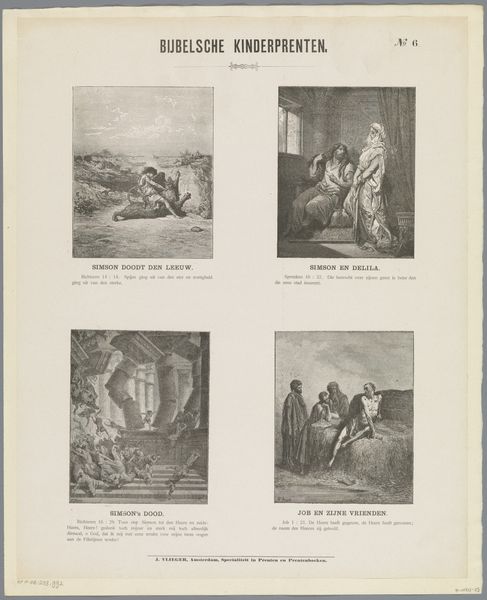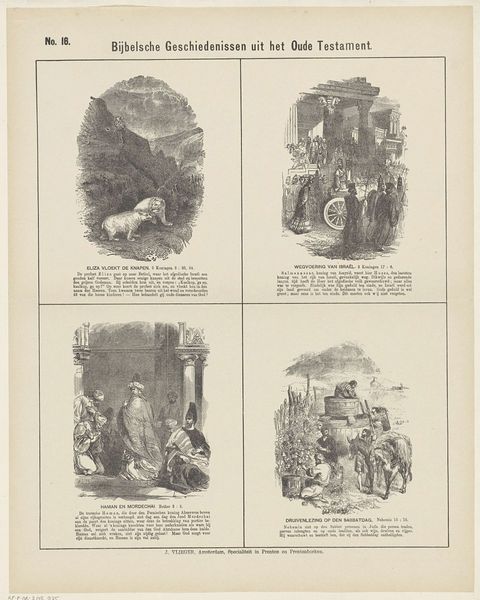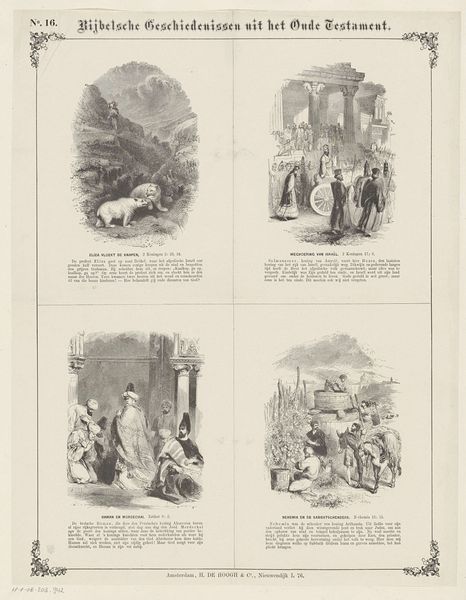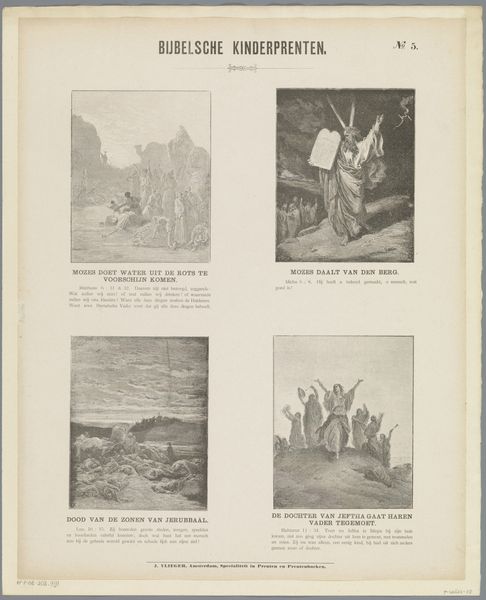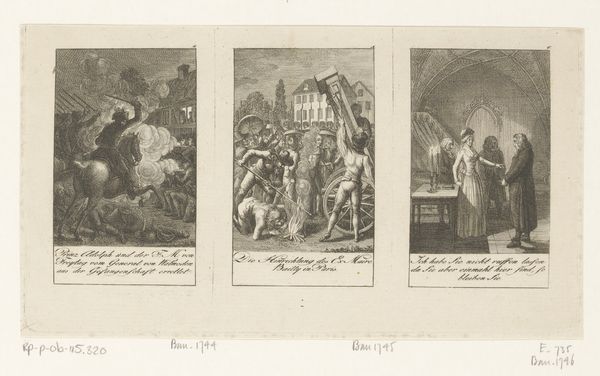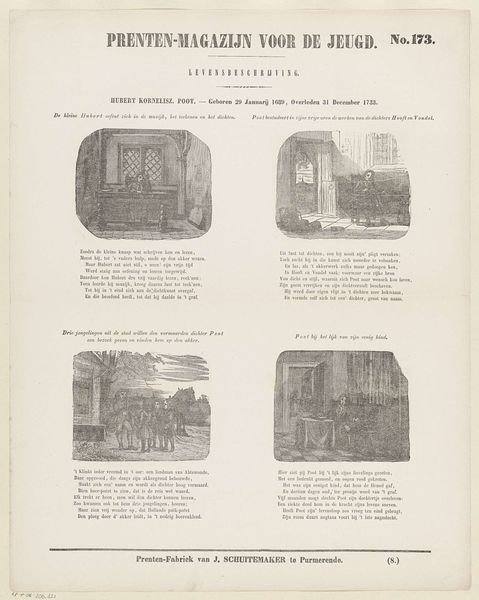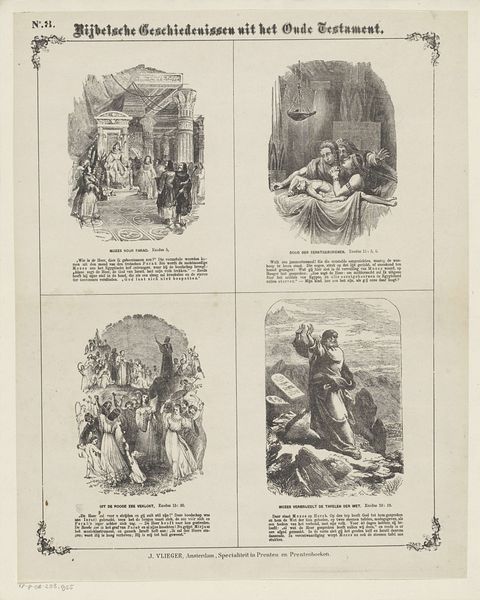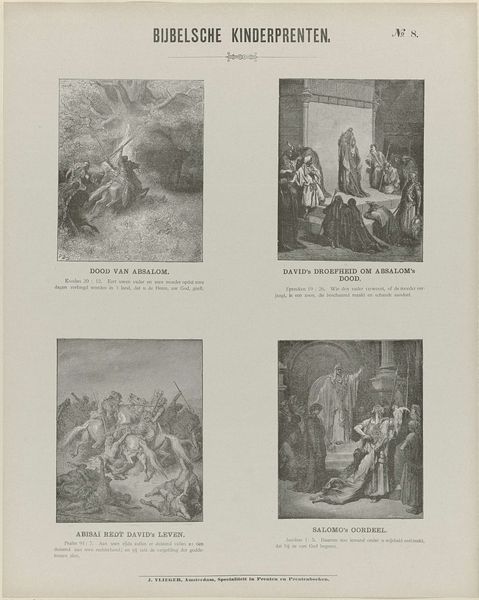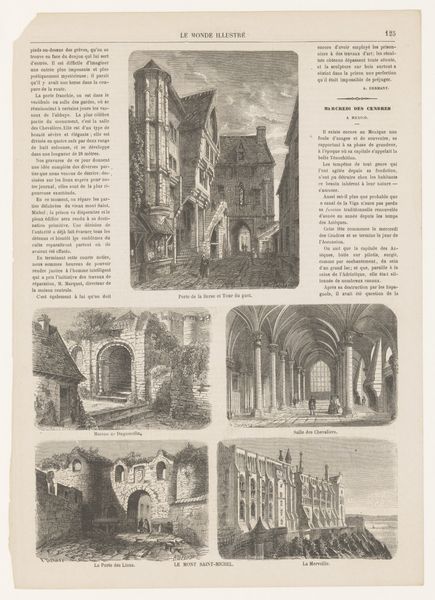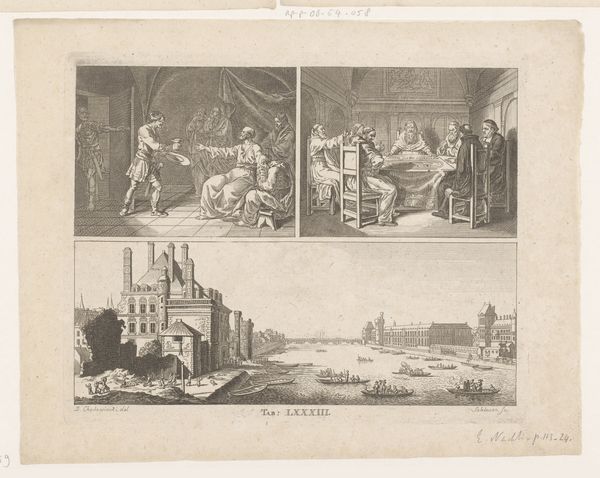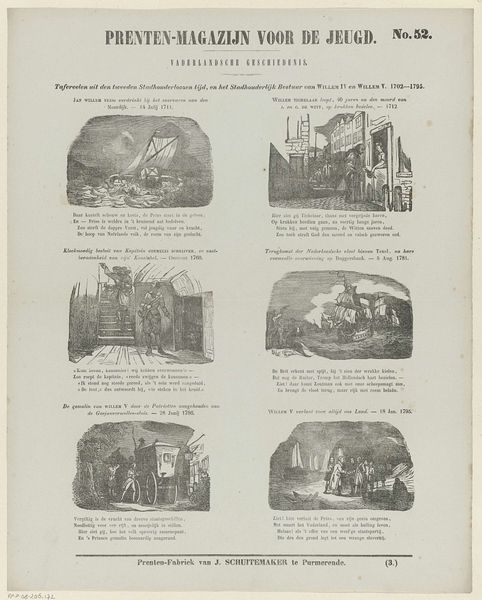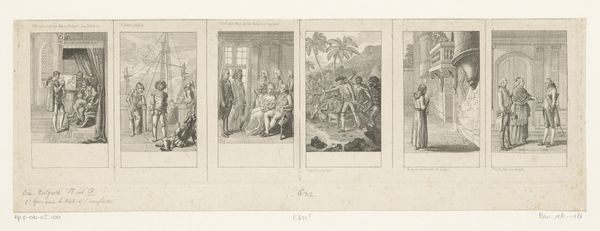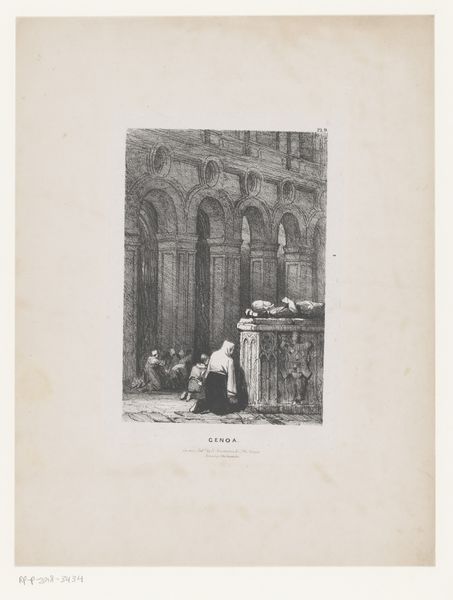
print, woodcut, engraving
#
vintage
#
narrative-art
# print
#
woodcut
#
history-painting
#
engraving
#
historical font
Dimensions: height 429 mm, width 345 mm
Copyright: Rijks Museum: Open Domain
Editor: Here we have "Biblical Children's Prints" by Adolphe François Pannemaker, dating from 1869 to 1908. It's a print, an engraving perhaps, or a woodcut. It's monochromatic and divided into four scenes. What do you make of the overall composition and structure? Curator: I observe the grid-like organization, segmented into four distinct narrative panels, a structure reminiscent of early comic strips. This fragmentation, while providing clarity in isolating distinct biblical episodes, raises questions about their interconnectedness. Consider the lines of the engravings. Note how it employs visual rhyming between the architectural constructs in "Moses Before Pharaoh" and the "Jacob at Bethel" scenes, what does this suggest? Editor: Perhaps a parallel between divine encounters and earthly power? The architectural space creates that relationship... Curator: Precisely. And consider the graphic weight in relation to hierarchy: In the "Moses" print, he is the smaller character but set centrally. This echoes the similar approach applied to Jacob on the opposite image panel. Does it shift our perception of dominance? How does the artist’s deployment of compositional tension serve the ideological message? Editor: The visual arrangement directs attention to those key figures, despite their scale, it brings a different hierarchy within the image’s visual structure. Curator: The deliberate crafting of the prints fosters discourse concerning form, arrangement, and the signification of the subjects portrayed. Editor: I see how focusing on the arrangement of forms reveals connections I hadn’t considered initially. Curator: And it helps reveal the symbolic structure which underpins it.
Comments
No comments
Be the first to comment and join the conversation on the ultimate creative platform.

